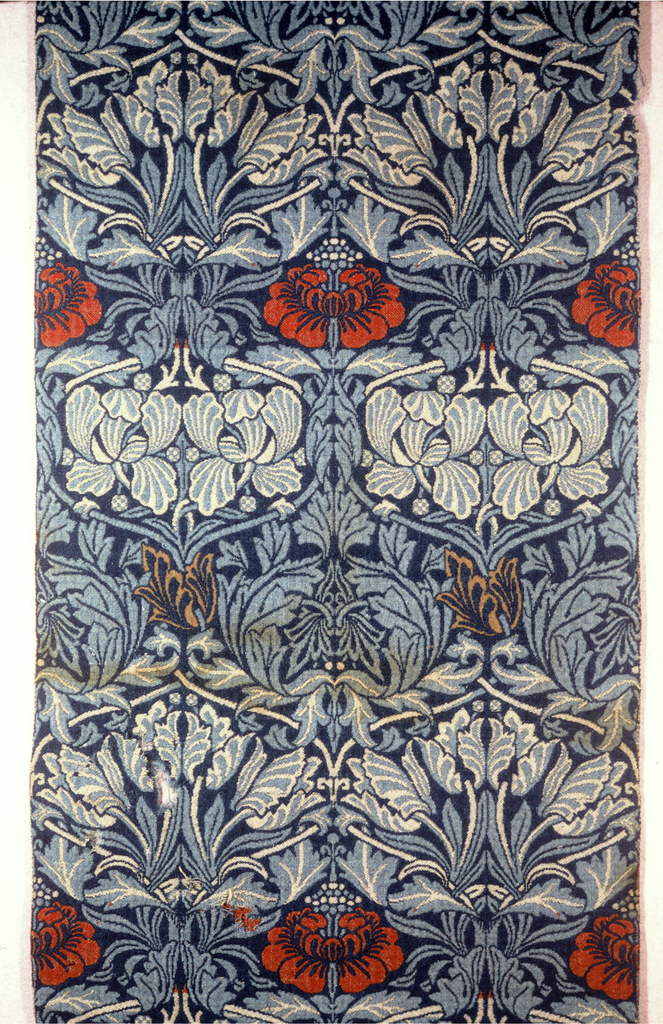Tulip and Rose, designed by William Morris (1834 – 1896) for Morris & Co., is exemplary of Morris’ goals for the Arts and Crafts movement. The floral design was created with five colors (navy blue, ice blue, red, white and yellow) in a tight pattern of stylized curving leaves and vines of white and light blue, accented by the contrasting pop of red roses and yellow tulips against the navy blue background. Made of dyed wool yarn, the sturdy textile was woven in the triple cloth technique which utilizes three sets of warps and wefts to create detailed multicolor patterns.
Known as the father of the British Arts and Crafts movement, Morris championed the use of traditional craft techniques in the face of mass industrialization that swept through the United Kingdom in the nineteenth century. Influenced by the writings of John Ruskin, Morris was opposed to the displacement of the craftsmen that had resulted from the growth of mechanization and the factory system. He acknowledged that mechanization was a form of progress, and proposed a compromise that allowed craftsmen to contribute to the design process, while reassigning monotonous tasks to machinery.
In his own design practice, Morris dedicated himself to learning pre-industrial craft techniques such as tapestry weaving and woodblock printing. Despite his belief that everyone should be able to surround themselves with beautiful, handcrafted objects, most of his products were expensive, specifically due to the labor necessary to create them. The techniques he utilized required great skill but were also more time consuming. However, Morris did produce many wonderful textiles and wallpapers such as the Tulip and Rose curtain. The floral design illustrates Morris’ belief (undoubtedly influenced by Ruskin) that a craftsman should seek inspiration from nature, as the connection was considered beneficial to the well-being of the craftsman.
Nyasha Hayes is currently a Masters student in the History of Design and Curatorial Studies program, offered jointly by Parsons, the New School for Design and Cooper Hewitt, Smithsonian Design Museum.

2 thoughts on “Tulip and Rose”
Jeannine Falino on February 19, 2015 at 11:21 am
I don’t see a date associated with this object.
Susan Brown on February 19, 2015 at 2:39 pm
Sorry! Morris registered the design on January 20, 1876.